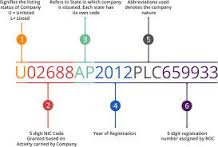- Obtaining Digital Signature Certificate
For the Directors of the company, we have to obtain the Digital Signature Certificate (DSC).
For the DSC, the following documents are required:
- For Indian Nationals: PAN Card (mandatory) and Voter’s identity card or Passport copy or Driving License copy
- For Foreign nationals and Non Resident Indians: Passport Residential proof such as Bank Statement, Electricity Bill, Telephone / Mobile Bill; Provided that Bank statement Electricity bill, Telephone or Mobile bill shall not be more than two months old. Foreign director’s specimen signature and latest photograph duly verified by the banker or notary.
- Obtaining Director Identification No. (DIN)
Application in Form DIR-3 is to be e-filed for getting the Director Identification Number for all the proposed directors.
- Application for Reservation of Name
Application in Form INC -1 to be e-filed for the proposed company, giving 5-6 options of the main name with combination of coined words. The same shall be reserved for a period of 60 days.
- Drafting of Memorandum of Association
The main lines of business to be pursued on formation of the company to be mentioned. The secondary or incidental objects also to be furnished.
- Drafting of Articles of Association
The bye-laws of the company to be drafted as Articles of Association in line with the provisions of the Companies Act, 2013.
- Filing Incorporation Form
The e-filing of Form No. INC.7 to be made alongwith,
(a) The Memorandum and Articles of the company duly signed by all subscribers;
(b) A declaration in Form No.INC.8 by an advocate or Practicing professional (CA, CS, CA) who is engaged in incorporation, and a person named as Director, Manager or Secretary, that all requirements related to incorporation has been complied with;
(c) An affidavit in Form No. INC.9 from each subscriber and from each person named as first director in the articles that, he is not convicted of any offence in connection with promotion, formation or management of any company, he is not been found guilty of any fraud or misfeasance or of any breach of duty to any company during preceding five years, and all the documents filed with the Registrar contain correct, complete and true information to the best of his knowledge and belief;
(d) The address for correspondence till its registered office is established;
(e) The particulars of every subscribers along with proof of identity;
(f) The Particulars of first directors along with proof of identity; and
(g) The particulars of interests of first directors in other firms or bodies corporate along with their consent to act as directors.
- Registered Office to be established
A company shall have a registered office within 15 days of Incorporation and it shall file Form No.INC.22 to verify the same.
Thus all the documents can be filed on-line to incorporate the company.
As initiative of ease of doing business, incorporation can be done through e-filing of single integrated Form 29, as well.

